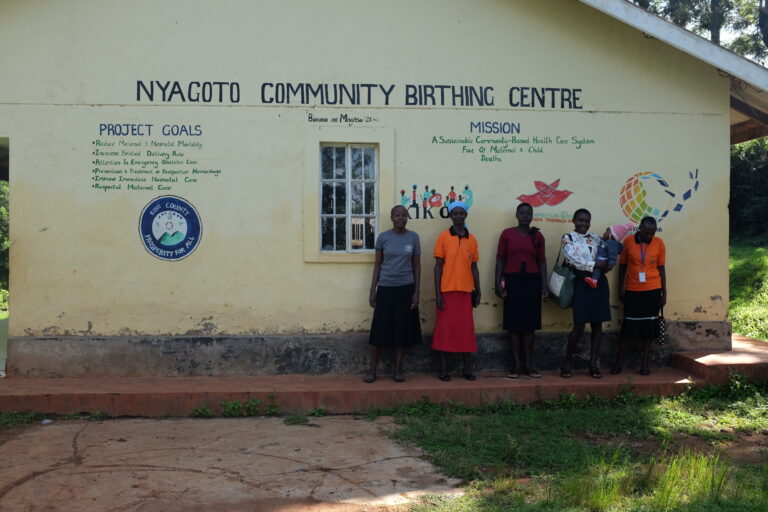USI board member Ed Witkin visited Kenya and Zambia in late February of this year to lead training for World Vision staff. They focused on installing solar panels on water pumps that were previously installed by World Vision in a few communities. Below are his accounts of his second day in Kenya.
On day two of our training in Kenya, we decided to switch the schedule and go out to a water pumping site to give us time to review the system and critique the installation. The pump site, Enkejju Errap, was about 1 1/2 hours northeast of where we stayed in Namanga. The road was dirt and we crossed about 45 km of fairly flat land with low scrubs and many cows and goats being herded by their Maasai shepherds. When we arrived at the pump site, there were quite a few local Maasai men and women gathered around the water outlet. The overflow feeds into a large trough, which is used to water the cattle and goats.
The water tank is quite impressive, though we questioned why it needed to be so high up (and therefore more expensive), as the water only served one outlet and did not appear to be distributed to other locations. There was one broken module in the PV array, which possibly happened during transport, as the array is in an unpopulated area and it doesn’t seem likely that someone would have thrown a rock up there.
We found that, as in a system we saw in Ghana, the angle steel that protects the modules from theft is too wide and shades the edge of the cells, thus reducing the panel’s efficiency.
One of the main issues with all the PV systems we’ve seen here is that there is no monitoring, either on the PV side or the plumbing side. We are looking at remote monitoring equipment that is available for the system. Since cell phones are so prevalent, and cell service is excellent, this would be a logical improvement (and necessary for maintenance and troubleshooting). For the site we visited we have found that Lorentz has remote PV and water pumping monitoring which could keep track of array output and performance as well as water pipe pressure, flow rates, etc. There are cell phone apps for this system. Without any monitoring, and with the limited in-house PV experience, World Vision is currently in the dark about how the systems are performing. All they can really tell is if water is coming out the tap, but there’s no easy way of knowing if the tanks are full, if the pump is pumping efficiently and up to its desired specs, etc.
The Maasai Community
The local Maasai community is incredibly grateful for the water and are friendly and welcoming to visitors. So much so that they roasted a goat for us and welcomed us to stay and eat under their “free” dining area (under a large bush). Accepting their invitation was “fitting into their shoes” and it would have been quite rude not to accept their offer. There was plenty of laughter and taking photos. Most of the local Maasai only spoke Swahili, which almost all of the class participants also speak. I remembered a song I’d learned about Kenya in Swahili when I last visited in 1984 (the dark ages). I’d forgotten some of the words, so I had a few of them sing it while I recorded their singing.
An interesting observation I had is that the Maasai women wear beautiful beads and both women and men tend to have very large holes in their earlobes to hang various beads and jewelry. I met a group of women who were selling their wares and noticed they are part of a large cooperative of women who are making their beadwork available to tourists both locally and via the internet.

Article and photos by: Ed Witkin
Edited by: Eric Fitch



